Applying airline safety standards to the OR
USF surgeon-pilot proposes aviation industry offers clues for reducing medical errors
Read Dr. Karl’s Bulletin of American College of Surgeons article: “Simple Tools for Safe Surgery”
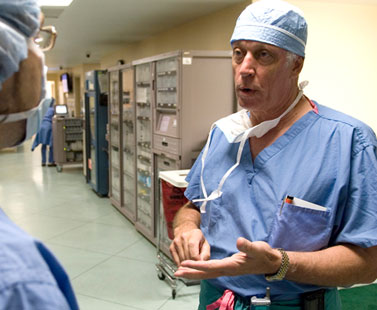
USF Health Chair of Surgery Dr. Richard Karl says, while both are challenging and complex, surgery is much harder than flying.
Dr. Richard Karl’s lifelong interests in surgery and aviation merge when it comes to a third passion of his — patient safety.
Professor and chair of the Department of Surgery at USF Health, Dr. Karl has been a licensed pilot for more than 40 years. He is a contributing editor to Flying magazine, and frequently speaks to physician audiences about the potential for applying aviation safety practices in the surgical environment.
“Flying and surgery are rewarding, highly complex disciplines very dependent on effective communication. They both deal with natural forces — weather on one hand and illness on the other,” said Dr. Karl, a surgical oncologist at Moffitt Cancer Center. “In both the consequences for error have the potential to be catastrophic.”
In an article earlier this year in the Bulletin of the American College of Surgeons, Dr. Karl suggests that some of the practices that have made modern commercial flight so routinely safe might offer clues for reducing medical errors. In a My Turn column in the Sept. 24 Newsweek, he writes about how physicians must rise above a historically uncooperative culture and communicate more effectively with their fellow health professionals to reduce medical error.
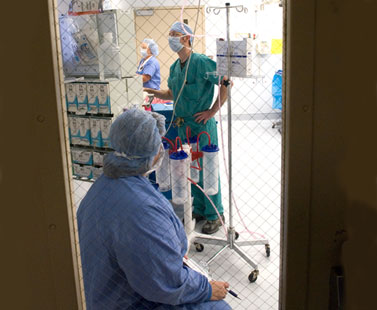
How Hazardous is Health Care?
Medical errors claim the lives of as many as 100,000 patients each year, according to the Institute of Medicine’s 2000 book called To Err is Human. That’s just the tip of the iceberg, Dr. Karl notes. The Institute of Healthcare Improvement estimates that 15 million “incidents of harm” occur in U.S. hospitals each year.
Media coverage tends to shine a spotlight on the relatively rare, but sensational, incidents like when the wrong limb is amputated, a patient wakes during surgery, or the surgeon leaves a sponge or tool inside the patient.
The bigger picture includes many insidious errors resulting in complications that may prolong recuperation and require additional care. “There’s a whole lot of smaller mistakes that fall under the radar — pervasive things like inattention to core temperature or blood sugar control or fluid administration that can harm patients,” Dr. Karl said. “The patient doesn’t die, but maybe they develop a bad rash or surgical site infection, or they wind up undergoing an avoidable procedure.
Dr. Karl notes that the reasons for all these mistakes are complex, but some systems used to detect and reduce pilot error — like standardized training and equipment, centralized databases, pre-flight briefings, emergency checklists and backup plans — could be adapted to help make surgery more efficient and safer.

Miscommunication Leads to Many Mistakes
Avoiding the small miscommunications that can lead to significant patient harm requires a cultural shift from surgeon as “captain of the ship” model to a more collaborative approach emphasizing open communication. “Even though the pilot is called captain, all documentation and job descriptions in the airline industry characterize and emphasize leadership,” Dr. Karl said.
“A good leader, whether a pilot or a surgeon, collects information from various sources. He or she doesn’t avoid responsibility, but seeks to come to good decisions by listening and drawing upon the strengths of other members of the team,” Dr. Karl said.
Medicine still has a long way to go in creating a culture where members of the healthcare team speak freely, without reluctance to ask for help or fear of retribution. Dr. Karl gives the example of a young surgeon struggling with a laparoscopic cholecystectomy — surgery to remove the gallbladder. “He’s struggling and worried about cutting the cystic bile duct,” Dr. Karl said. “The nurse standing next to the surgeon has seen thousands of these operations, yet the surgeon never asks the nurse ‘What do you think?’ and the nurse never says to the surgeon ‘Don’t cut that.’”
Even Morbidity and Mortality conferences, where physicians routinely meet to confidentially review cases in which a patient died or suffered a poor outcome, often miss the mark in uncovering sources of error so that a similar incident might be avoided in the future.
Because of time limitations and scheduling difficulties, M&M conferences do not typically include nurses or other members of the health care team who could bring a different and valuable perspective to the case, Dr. Karl said. “That’s one of their big weaknesses.”
While details of the patient’s case history, treatment and outcome are discussed, very little time is devoted to systems failures and the human factors that contribute to error, Dr. Karl said. “There’s really no drill down the way a real root cause-analysis would be conducted in aviation. For instance, we’re not asking the young physician presenting the case ‘What were the impediments that got in the way of doing whatever needed to be done? Did this happen at night or on a weekend? Were you tired or sick or distracted? Did you feel some fear or intimidation about calling the attending or chief resident when you got into a difficult situation?’”
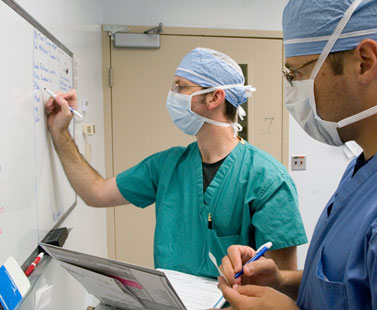
Common-sense Steps to Improve Surgical Safety
Asked to name one protocol he’d implement in hospitals nationwide to improve surgical safety, Dr. Karl quickly responds that he would require all members of a surgical team gather for a routine briefing before each operation. “It definitely helps with contingency planning,” he said.
Over the last three years, he’s done just that in his operating room at Moffitt. He put up a white board to list such specifics as any previous operations the patient underwent, site of the impending operation, any medications that could affect the operation’s safety, names of all the physicians, nurses, technicians and anesthesia staff working the case, medical risk factors and special needs like blood typed and cross-matched for transfusion.
Team members discuss expected length of the operation, fluid administration, and possible difficulties they may encounter as the procedure progresses.
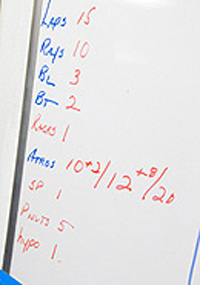
Dr. Karl operates without music — a standard in many operating rooms — to make it easier for members of the surgical team to hear one another. He invites everyone in the room to speak out if they notice anything unusual or potentially harmful. He asks for callouts from the anesthesiologist every 30 minutes to monitor the patient’s blood pressure, pulse, urine output, temperature and oxygen levels. In return, he said, he lets the anesthesiologist know as soon as he encounters any difficulty and whether he plans to continue with the operation or discontinue the procedure. “Everything goes much smoother if we talk about what’s happening,” he said, “rather than me just running the surgeon’s side of the show and the anesthesiologist running the anesthesia side of the show.”
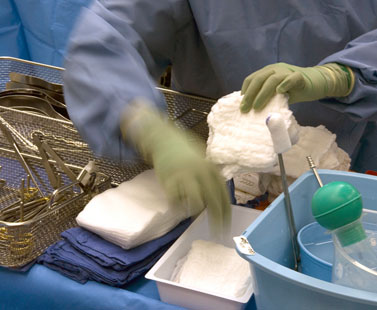
Differences of Culture
While the airplane cockpit and operating room have a lot in common, there are distinct differences, Dr. Karl said. One of the biggest is that pilots work for the airline, while most surgeons are still independent contractors.
“If the airline doesn’t like the way a pilot flies because they’ve deviated from standards, then the pilot is fired,” Dr. Karl said. “But, in most parts of the country, surgeons are in private practice and hospital CEOs are interested in attracting and keeping the surgeon’s business to bolster the bottom line.”
Recurrent training and evaluation of pilot competencies by the Federal Aviation Administration are more rigorous than the continuing education requirements surgeons must meet to maintain their licenses and board certifications, Dr. Karl said.
Airlines also long ago learned that certain weather conditions were likely to increase the risk of an unsafe landing. But a surgeon can operate on anyone, even those whose cardiac or pulmonary function makes them poor candidates for a beneficial outcome, Dr. Karl said.

“If the visibility is below a certain level, the airline says the captain may NOT approach. The flight must be diverted,” he said. “We don’t have that kind of system in medicine.”
Dr. Karl notes in the ACS Bulletin article that aviation and surgery have another major difference: “Without intending to diminish either glorious profession, as a pilot type-rated in the Boeing 737 and as a surgical oncologist, I can say unequivocally that surgery is much harder than flying.”

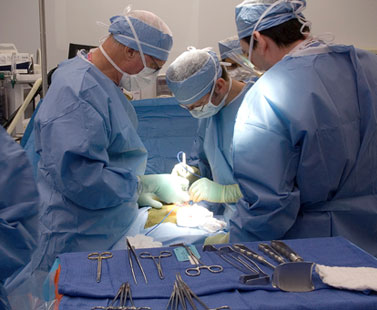
– Story by Anne DeLotto Baier
– Photos by Eric Younghans/USF Health Media Center

